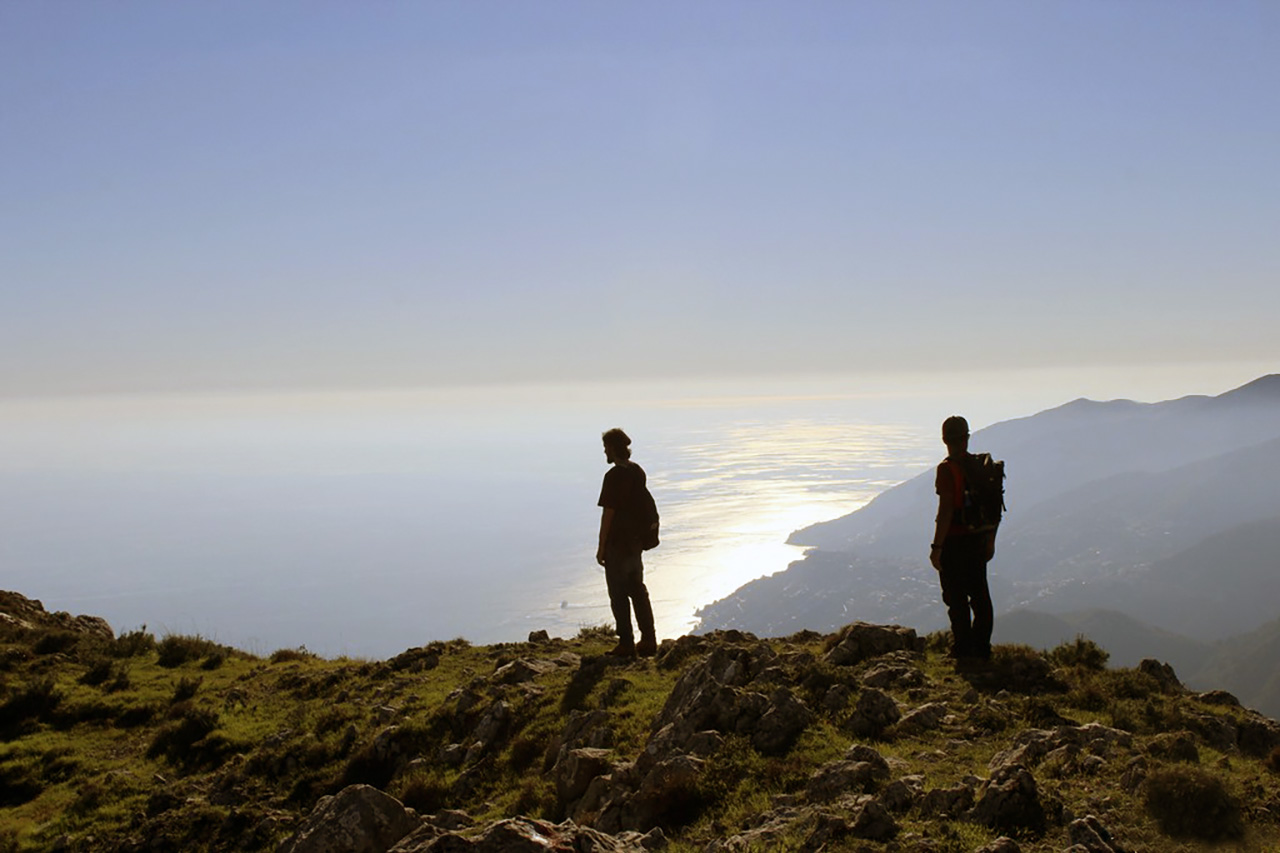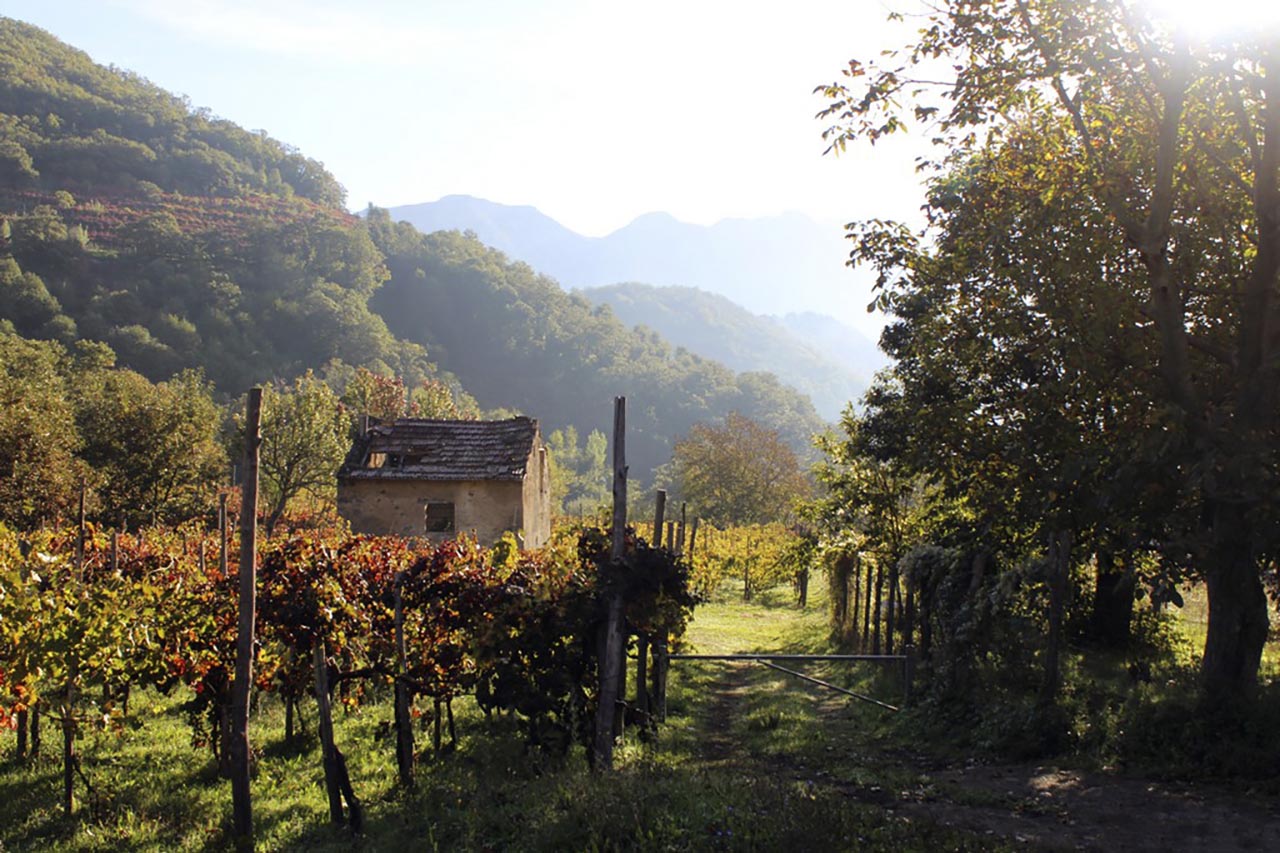His work on the famous Path of the Gods gave rise to a new way of traveling and exploring the area on foot by mapping 200km of walkable routes.
June 1st, 2023. By Anna Volpicelli, photo by Jurjen Drenth
He speaks six languages. Seven, if you include the Neapolitan dialect. Peter Hoogstaden, a Dutch engineer and founder of Genius Loci Travel, a tour operator specializing in cycling, hiking, and responsible tourism, has made environmental sustainability and probably the fight against climate change his philosophy of life.
A resident of Salerno, when he’s not traveling around Italy and Europe working on territories to bring green areas back to life and promote zero-impact tourism, he gets around the city and throughout the Amalfi Coast, on foot or by bike. Tall, slender, with an agile physique and a snappy gab, in one speech, he effortlessly switches between Italian, English, French, and dialect, depending on the circumstances.
His sense of humor, seasoned occasionally with a slight note of genuine sarcasm, sets him apart. “I’m a practical, precise man, and I like to joke,” he tells us with a laugh. His attention to detail, concreteness, foresight, and ability to manage several projects simultaneously has made him one of southern Italy’s most sought-after tourism entrepreneurs.
Discovering Campania’s potential
His first direct encounter with Italy was in the 1990s, as he was invited to participate in an international conference at the Cilento National Park in Palinuro.
“At that time, I was working on behalf of the EU at the French ministry, living in Lille and then in Boulogne sur Mer, and my role was to deal with European green areas in a special program that brought countries together in a kind of exchange of information on regional parks for their good maintenance. The problem was that the Mediterranean projects struggled to get off the ground, unlike the northern European countries and Spain. So the French ministry sent me to Italy to care for them.”
It was an experience that was supposed to last for a fixed time but became his life commitment. “From the balcony of my hotel in Palinuro, I was looking at the view thinking this is a wonderful place with huge potential for outdoor tourism.“

Early projects on the ground
Back in France, he began working with LIPU, WWF, and Franco Tassi, the historical director of the Abruzzo National Park. “I kept seeing that Italian projects were failing to materialize. So I called Franco Tassi, with whom I had established good working relations, and told him I was tired of being bureaucrat and wanted to help his country. He proposed that I work for him.”
He moved to Naples, where his girlfriend at the time lived, and began working for the Abruzzo National Park with an eye on the Campania region. “Campania had just issued a protocol related to Law 33 of 1993, which concerned the establishment of regional parks. I proposed contributing to that program, but nothing good came out. So I began to work on some green areas in Naples, between Agnone and the Park of the Hills of Naples, until I moved to Agerola to collaborate on the Master Plan.”
Residence in Agerola
It was 1997 when he began to get his hands on Agerola‘s trails. Initially, he talked to various mayors on the Coast, seeking support, but he had difficulty finding their consent. “At that time, there was no talk of hiking tourism, but I saw the potential, and Agerola was the perfect place to start. So I talked to the then mayor of Agerola, Tommaso Cuomo, and alderman Pasquale Gentile, and they gave me confidence.”
His first project was the now-famous Path of the Gods. “Everyone weighs it was a discovery. I didn’t discover anything. The Path of the Gods was already there. There were a few CAI signs but nothing more. It was a little beaten path. I used to go there with some friends from the local circle of Legambiente Riola. Professor Aldo Cinque had already made a small inventory of possible trails. I took my cue from there and cataloged all the trails in Agerola.”
Working on mapping the various possible trails, he managed to outline 200 km. of routes that branched off from Agerola along the entire Coast. “Tourism in Campania has a long history; my commitment has always been to enhance its potential. Driving along the Amalfitana, we see only 5 percent of what the Coast is, but 95 percent remains hidden, and the trails help us discover areas less visible to the naked eye.“

Trust repaid
He bet with the mayor of Agerola 100,000 lira that he would bring at least 100 foreign tourists that year. “I contacted all the agencies and tour operators I knew, some of the most important ones in Europe, including the Dutch SNP and the English Exodus. Almost 150 Dutch people arrived, and 15 groups of English people. In that year, I found myself managing over 1,500 people. I had to hire a secretary because I didn’t know how to do it; I was an engineer, not a tourism entrepreneur.”
The first to embrace the initiative were the Europeans themselves. “I was surprised myself. I remember a group of British people arrived in February. They were staying in Agerola, at the Gentile Hotel. I got a call from the group leader complaining about the cold, and the hotel owner told me what are they doing there in February that it was cold. After a while, some journalists from National Geographic and Discovery Channel arrived. However, the latter, I did not take them to the Trail of the Gods but to another trail in Montepertuso. It was a great success. The episode aired for a long time.”
Within a year, Peter managed to turn Agerola into a hub for sustainable tourism and hiking. From here, he then opened his agency Genius Loci Travel.
A glimpse into the future
He is currently involved in other projects on the Coast, including the Sentiero delle Formichelle in Tramomti, dedicated to the women who, in the past, bent under heavy wooden bags carried lemons. “On the Coast, the paths are ancient communal roads that residents have always walked for commercial reasons, especially those who live in the mountains. And the Formichelle path has a very ancient heritage since these women lemon transporters walked it.”
This itinerary, which starts in Tramonti and leads from the inland hills to the sea by crossing mule tracks and long terraces of lemon trees, has remained largely intact. “The territorial heritage of the Coast is wide and rich. All the various trails are interconnected. There are many suitable for all needs, from easy to very challenging. For example, the Alta Via dei Monti Lattari is nothing like the trails found in Trentino. It is a mountaineering trail with significant elevation gains. I challenge any mountaineer to come here and experience it.“
Sustainable tourism at home
According to Peter, the vital challenge is to make Italians also discover the Genius Loci of their BelPaese. “After so many years of working with foreigners, we would also like to bring more and more Italians here to the Coast, not just for a day trip, but for a real vacation to discover the area. We have developed many proposals, and a few months ago, www.trekking-italia.it was born, a platform connecting many trekking routes to get to know this part of southern Italy. Because the most sustainable tourism is the one on your doorstep.”
